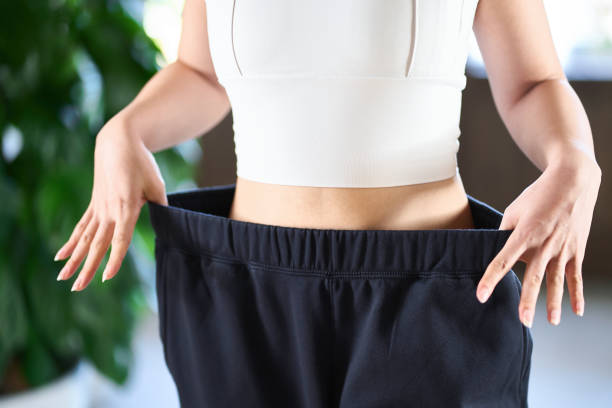Healthy Living in 2025: Diet, Fitness & Mental Wellness Guide
The Ultimate Guide to Healthy Living: Diet, Fitness & Mental Wellness in 2025
🧠 Introduction: Why Healthy Living in 2025 Is More Important Than Ever
With increasing digital dependency, sedentary lifestyles, and a rise in stress-related illnesses, maintaining health in 2025 has become more essential—and more challenging—than ever before. Studies show that over 70% of adults are not meeting daily activity or nutrition guidelines. The good news? Small, consistent changes to your diet, physical activity, and mental wellness routines can radically transform your life.
This guide covers everything you need to know to get started: what to eat, how to move, how to rest, and how to stay mentally strong—all backed by current data, expert insights, and real-world tips.
🥗 Chapter 1: Building a Nutritious Diet for Longevity & Energy
What Makes a Balanced Diet in 2025?
A balanced diet includes the right proportions of macronutrients (carbs, proteins, and fats) and essential micronutrients (vitamins and minerals). With so many trendy diets in circulation, the real goal remains the same: eat whole, real foods in moderation.
Essential Food Groups:
- Vegetables & Fruits – Aim for 5–9 servings a day. Choose seasonal and colorful produce.
- Whole Grains – Brown rice, quinoa, oats, barley (limit refined flour).
- Proteins – Lean meats, legumes, tofu, lentils, eggs.
- Healthy Fats – Olive oil, avocado, nuts, seeds, fatty fish (like salmon).
Sample 1-Day Meal Plan
| Meal | Example |
|---|---|
| Breakfast | Oatmeal with berries, almond butter, green tea |
| Snack | Handful of mixed nuts and 1 banana |
| Lunch | Grilled chicken salad with quinoa and olive oil dressing |
| Snack | Carrot sticks with hummus |
| Dinner | Stir-fried vegetables, brown rice, tofu, herbal tea |
Hydration Is Key
- Minimum 2–3 liters of water per day.
- Avoid sugary sodas and limit caffeine.
- Add lemon or mint to make water more appealing.
Supplements (If Needed)
- Vitamin D – Especially if you have limited sun exposure.
- Omega-3 Fatty Acids – For heart and brain health.
- Magnesium – Supports sleep, mood, and muscle health.
🏋️♂️ Chapter 2: Exercise That Fits Your Life
How Much Should You Exercise?
- Adults need at least 150 minutes of moderate aerobic activity per week (WHO).
- Include 2 days/week of strength training.
Home Workouts for Busy People
- Bodyweight Exercises: Pushups, squats, lunges, planks
- Apps to Use: Nike Training Club, FitOn, Seven Minute Workout
- Time Needed: Just 20–30 minutes/day
Gym or Outdoor Fitness Options
- Gym workouts with free weights or resistance bands
- Yoga classes for flexibility and focus
- Swimming, hiking, or cycling for cardio and stress relief
Weekly Fitness Plan
| Day | Workout Focus |
|---|---|
| Mon | Full-body strength |
| Tue | HIIT + Core |
| Wed | Light cardio + yoga |
| Thu | Upper-body resistance |
| Fri | Lower-body strength + core |
| Sat | Walk, hike, or bike ride |
| Sun | Recovery or light stretching |
🧘 Chapter 3: Mental Health and Emotional Well-Being
The Silent Health Epidemic
Depression, anxiety, and chronic stress are among the top causes of disability worldwide. Managing your mental health is as critical as physical health.
Daily Practices for Mental Resilience
- Mindfulness Meditation: Just 10 minutes/day helps reduce anxiety and improve focus.
- Journaling: Write down your thoughts, goals, or gratitude.
- Nature Exposure: Even 20 minutes outdoors improves mood.
- Breathing Exercises: Try box breathing (inhale-4, hold-4, exhale-4, hold-4).
Sleep Hygiene (The Foundation of Brain Health)
- Stick to the same sleep-wake time every day.
- Limit screen time 1 hour before bed.
- Avoid caffeine after 2 PM.
- Use white noise or sleep sounds if needed.
📲 Chapter 4: Top Wellness Tools & Apps in 2025
- Calm / Headspace – Meditation, sleep support
- MyFitnessPal / Cronometer – Track calories and macros
- Fitbit / Apple Health – Monitor activity and sleep
- Zero – Track intermittent fasting
- Youper – AI mental health coach
Use tools that match your routine—not overwhelm it. Start with one or two.
🧩 Chapter 5: Lifestyle Habits That Make a Difference
Morning Routine
- Wake up early
- Hydrate (1 glass of water)
- 5 minutes of journaling
- Light stretching or yoga
Evening Routine
- Screen-free wind-down (reading, music, bath)
- Prepare clothes, meals, or to-do list for next day
- Sleep by 10:30–11:00 PM for optimal recovery
Break Bad Habits
- Cut down on processed sugar
- Quit smoking and excessive alcohol
- Replace Netflix binges with a walk or audiobook
🧾 Chapter 6: Healthy Living Checklist
✔ Eat whole, natural foods daily
✔ Exercise 4–5 times per week
✔ Stay hydrated
✔ Get 7–8 hours of sleep every night
✔ Practice mindfulness
✔ Limit screen time and digital noise
✔ Stay socially connected (family, friends, community)
✔ Use digital wellness apps to stay on track
🔗 Related Resources
- Best Health Insurance Plans in Pakistan 2025
- Top AI Fitness Apps for 2025
- Natural Sleep Remedies That Actually Work
- Best Weight Loss Supplements in 2025
🙋 Frequently Asked Questions
Q: How do I start living healthy if I’m completely new?
A: Begin with one habit—like walking 20 minutes daily or replacing soda with water—and build from there.
Q: Is eating healthy expensive?
A: Not necessarily. Buying in bulk, choosing seasonal produce, and cooking at home can make healthy eating affordable.
Q: I work long hours. How can I stay active?
A: Try short 15-minute home workouts, take standing/walking breaks every hour, and use weekends for longer sessions.
🎯 Conclusion: Start Small, Stay Consistent
Healthy living isn’t about perfection—it’s about progress. Pick one change today. Maybe it’s walking after dinner. Maybe it’s preparing a healthy breakfast. Your future self will thank you for every small, smart choice you make now.
Start now. Stay consistent. Become your healthiest self in 2025.





